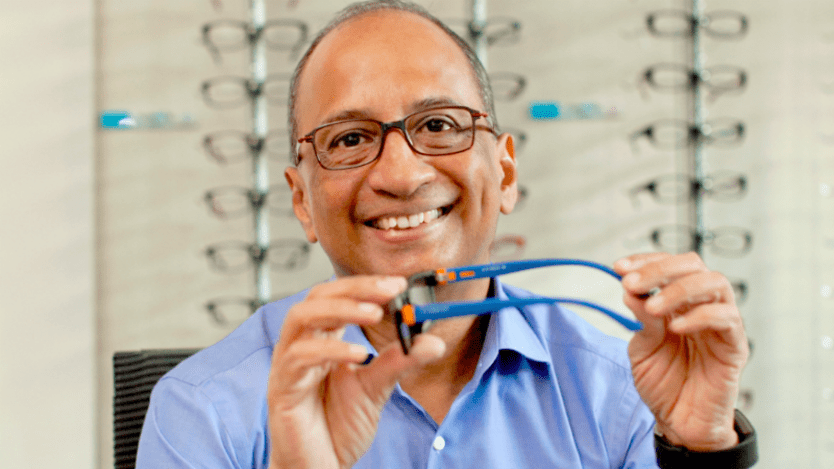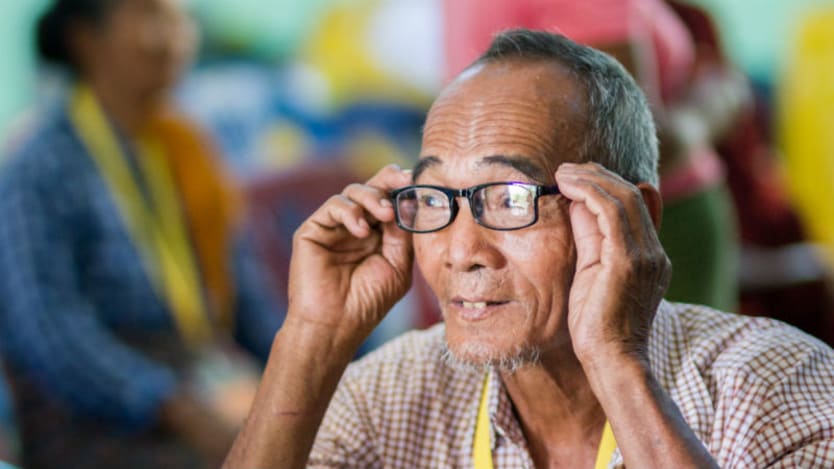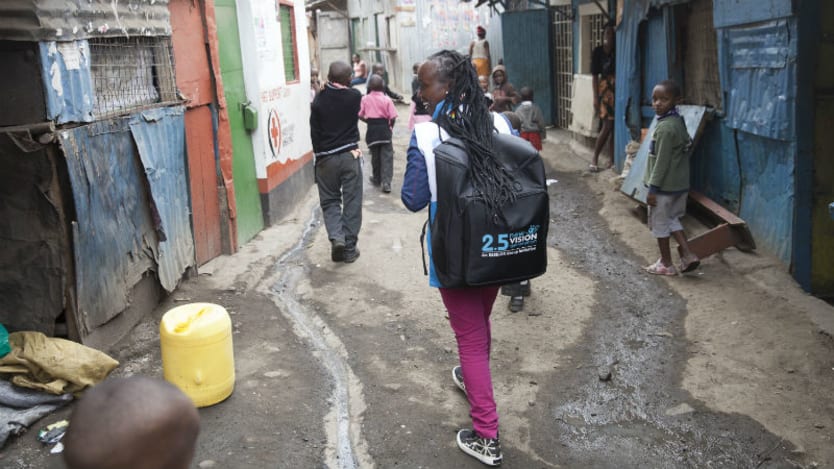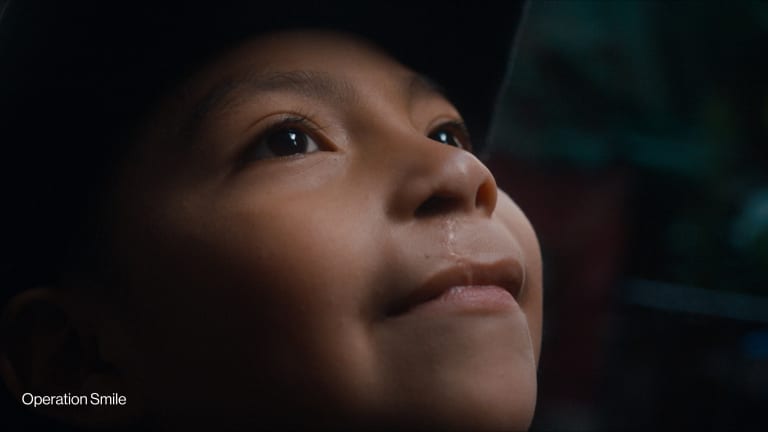
Good eyesight is critical to so many components of a person’s daily life and without it, 2.5 billion people are unable to learn, earn, and be included in society. In the era of the Sustainable Development Goals, the global development community is focused on the crucial areas of good health, equality, and decent work. But none of that can be achieved at an individual, or even community, level if there’s poor eyesight and no facilities to remedy this.
Jayanth Bhuvaraghan, chief mission officer at Essilor, believes that in order for the SDGs to be achieved, governments have to consider access to eye care for citizens — something that is often lacking in rural areas of developing countries, where there is little awareness on the importance of vision care.
“I think there is a genuine lack of awareness about this problem and that could be for many reasons. With the world facing many pressing health issues and immediate concerns, like noncommunicable diseases, malaria, HIV and AIDS, and the uncertain future of international aid, governments focus mainly on those areas.”
Speaking to Devex, Bhuvaraghan explained that unless access to eye care is improved, the SDGs won’t be achieved. He suggests a few ways this can be done.
Below are highlights from the conversation, edited for length and clarity.
How does a lack of vision contribute to other development issues?
“When you look at the numbers, one-third of the world’s population can’t see the world clearly and 90 percent of these people live in the developing world. Essilor can’t beat that alone. It’s time all stakeholders, public and private, act together to eradicate poor vision.”
— Jayanth Bhuvaraghan, chief mission officer, EssilorImagine a child in a school in a rural village. If they’re sitting in the classroom and can’t see the blackboard, automatically they’re not going to do well in class. They’ll fall back on grades and fall back on the social ladder. The child's life will be spoiled because they can’t see the world clearly. Now imagine a mother in a rural village. She can’t read, so contributes to her household by cooking and earning a little extra income for her family by stitching and sewing. As she gets older, she finds it harder to see things close up. She can no longer stitch or see the stones in the rice she’s cooking. She’s gone from being a contributor to a burden on her family and risks being excluded from her family and society when all she needs is pair of glasses.
Generally, if someone is wearing glasses and you ask them to take them off and work for five minutes, they’re completely impaired. When you have a toothache, it’s terribly painful and you rush to see a dentist within 24 hours. When you have poor vision, you’re either born with it and know nothing else, or the deterioration can be gradual and painless, so people learn to compromise and aren’t aware they have poor vision. This has big consequences.
Good vision is something many of us take for granted, but those that don’t have it really suffer. We see this in the field every day and it’s because of the lack of a simple intervention: a pair of glasses. This context is universal, affecting people in developed urban areas, as well as poorer rural villages.
There was actually a study done by the World Health Organization a few years back, which estimated that the socioeconomic cost due to loss of productivity down to poor vision is about $272 billion every year. In other words, put a pair of glasses on the noses of those who need them, and you increase productivity and the GDP of the whole world by $272 billion.

How does access to vision care feed into the SDGs?
Simply put, to meet all of the 17 goals, you need good vision to implement them. But there are several goals good vision can impact directly. Take SDG 3 on good health and well-being: if you have poor vision, there’s no way you can have good health and well-being. SDG 4 talks about education: there’s no way you can deliver on that — no matter the state of the art education you have — if students have poor vision. Then there’s decent work, economic growth, and reducing inequality. Inequality manifests when those with impaired vision don’t have the same chances to succeed as those who can see clearly. Vision has a direct role in fulfilling these four goals.
In addition to this, there’s a very sacred goal of mine: SDG 17, which talks about partnerships. When you look at the numbers, one-third of the world’s population can’t see the world clearly and 90 percent of these people live in the developing world. Essilor can’t beat that alone. It’s time all stakeholders, public and private, act together to eradicate poor vision. We believe strongly in the need to forge alliances and partnerships across the world with NGOs and corporations both in and out of the industry to address this issue collectively, through cross-sector and public private collaboration. Addressing this can create big returns for the entirety of society.

What key actions can be taken to tackle poor eyesight for those living in remote and rural areas?
There’s a question of infrastructure and lack of trained manpower. When you talk about eye care, it’s not like a bar of soap you can sell across the counter. You actually need someone to look in your eyes and find out what kind of correction you need. It’s about training people and having places where they can operate and deliver the services.
In this area of skills building, I think governments and the private sector can come together to create a new line of primary vision care providers who are qualified to conduct a simple eye test, identify whether a problem exists or not, and then administer simple interventions. In doing so, governments can help create the right environment, policies, and framework, in terms of regulation, to help in this area.
I'll give you an example. India has a unique problem because it has a large, young population, most of whom live in rural areas. Unemployed or underemployed, they move to the cities where their prospects for employment show little to no improvement, they don’t reach their full potential, and become a strain on already stretched resources. All this is happening when India lacks infrastructure in primary health care. We’re working to close this gap by training young people as primary vision care providers, developing their business skills, and then supporting them with grants to go back to their villages and set up microenterprises. In their own right, they then become business people and earn respect in the community. At the same time, we create a point of sale and deliver eye care to the people in the villages.

Looking to the future, what are the next crucial steps in ensuring improved vision for all?
Raising awareness of the importance of vision care is critical. This is relevant at both an individual level to make eye checks an annual habit, and at a policymaker level so vision is prioritized on national agendas. We’ve calculated that alone Essilor can probably solve the problem of uncorrected poor vision by the turn of the century. However, there is a golden opportunity to solve this health crisis affecting one in three people within one generation if collectively, through collaborations and partnerships, we can create access to vision care for 100 million new wearers every year from now until 2050 by training people and investing in skills building and infrastructure. The impact will pay big dividends.
No action to raise awareness is too small, and no idea or collaboration is too small to consider. We’ve seen problems like polio and other diseases be eradicated, so I’m confident we can and must do the same for uncorrected poor vision.
To learn more about the work Essilor is doing to improve vision care worldwide and how that contributes to the wider 2030 sustainable development agenda, click here.








